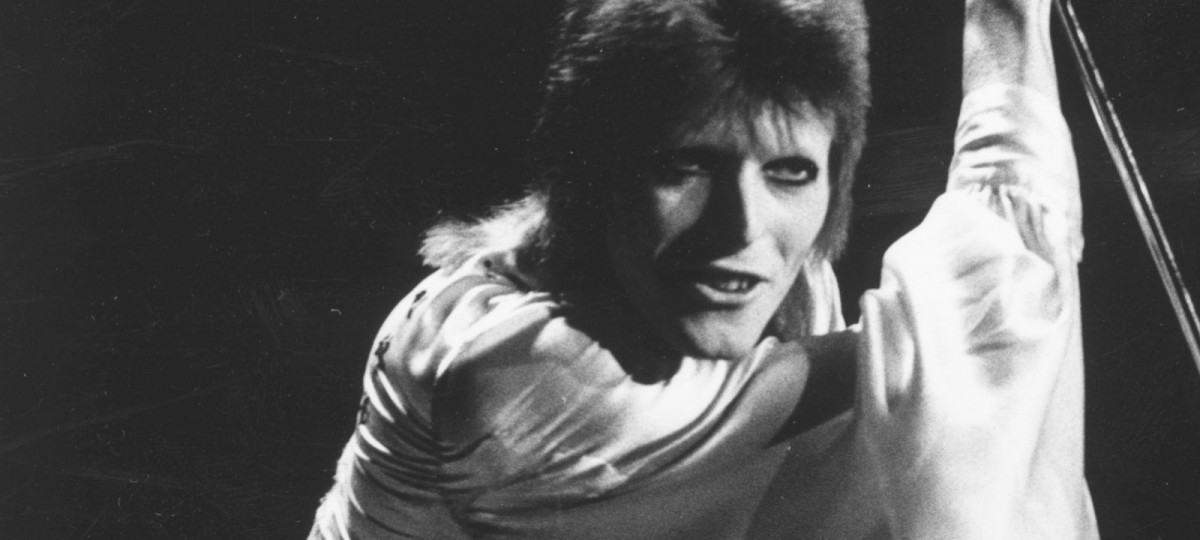He had crisp blue eyes, both of a slightly different hue after a childhood friend pierced one pupil with a fingernail during a fight, that could seduce any camera or crowd. He strutted all stages with a fierce lean mien under several forms and identities. His deep, cigarette-honed, intoxicating voice crooned during a tune before cracking unexpectedly into an otherworldly wail suggesting pain and playfulness that he kept from the public. He was a rock and roll legend and, like all good icons, he lived a sybaritic existence at times. Yet his musical accomplishments are worthy of our reverence and our accolades. For he worked more genres (glam rock, funk, folk, electronic, ambient, noise pop) in one lifetime than most artists can summon in a few years. And because his hold upon music and culture was so indomitable and without coeval, it seemed like he would live forever.
But David Bowie was mortal like the rest of us. Bowie, born David Robert Jones, died on Sunday, two days after his 69th birthday and the release of his final album Blackstar. And the cultural landscape as we now know it, a cesspool of risk-averse careerism and lassitude and the foppish pursuit of social media likes and followers, now has a hole that is about the size of the 181 mile crater near the lunar south pole: one that will take more creative energy and several distinct unparalleled visions to fill.
One listens to Bowie’s early pre-Ziggy Stardust albums — the cautionary “Quicksand” and the playful “Andy Warhol” from Hunky Dory, the many explorations of insanity in The Man Who Sold the World — seeing Bowie’s formidable cognizance of the world’s many traps and contradictions (he made several attempts to adapt Orwell’s 1984) and a sui generis talent who quickly surveyed the land and decided very fast to play the game entirely on his own terms. And then there are the later tracks — the gender-bending pre-grunge “Boys Keep Swinging” from Lodger, “Rebel Rebel”‘s incredible guitar lick on Diamond Dogs (his most covered track), the groovy “Stay” from Station to Station (to say nothing of the delightful “TVC15” from that same album) — that showed Bowie’s incredible ability to stay ahead of even his savviest audiences. Career reinvention was very much Bowie’s career. And he understood this well before MTV latched its image-conscious talons into the music world. But this often came close to engulfing him.
Bowie’s post-glam performance as Labyrinth‘s Jared the Goblin King had a tremendous impact on YA authors and will undoubtedly be cited as a shining exemplar of his influence, but this admirable pillar seems woefully insufficient considered against the edgier and more iconoclastic personae that Bowie donned during the 1970s. He took on identities like a man who could never have a large enough wardrobe. Like Miles Davis, Bowie’s commitment to his alter egos was austerely physical and often took a very personal toll, as can been in the above 1974 interview with Dick Cavett, with a sullen, sniffing (all the coke) Bowie poking the carpet with an outsize cane. During the mid-1970s, Bowie lived on a diet of red peppers, cocaine, and milk to sustain his Thin White Duke persona, who was a gelid and joyless man who wasn’t terribly pleasant to be around. The character was starkly Nietschean and often supported fascism, which matched Bowie’s return to Europe during the Station to Station years.
The albums stayed groundbreaking up to 1980’s Scary Monsters, which arrived with an innovative music video for “Ashes to Ashes” (seen above) that caused J.G. Ballard to remark how it was “like an extract from a surrealist movie.” But three years later, Bowie decided to cash in with a $17.5 million contract with EMI. He turned to Nile Rodgers instead of longtime producer Tony Visconti for a new album that signaled a more mainstream direction. Let’s Dance offered a respectable title single, one now relentlessly overplayed and one that cannot possibly sum up David Bowie at all, that gave the radio stations something relatively inoffensive to play (all of the lively work coming before that wasn’t “Changes” or “The Golden Years” seemed to be ignored by most DJs), but Bowie’s move towards lucre caused a severe damage to his long-standing relationship with Visconti (although the two would work together again on 2002’s Heathen).
Yet even Bowie’s shift to the mainstream couldn’t hinder the ever fertile Bowie from trying out experiments like 1997’s wonderful album Earthling (which came after Bowie toured with Trent Reznor) or Tin Machine, an underrated two album period in which Bowie took a more low-key frontman approach and shifted to a noisier sound.
But Bowie was at his best when he was driven by words and noise. Perhaps Bowie needed to sink in the quicksand of his thoughts in order to return as valiantly and as resiliently as he did. Bowie made changing your image look as easy as putting on a new pair of socks. If his life’s work can be likened to taking the complex and personally devastating and making it appear so simple, then David Bowie was an undeniable musical genius whose legacy we are only just starting to understand.
